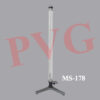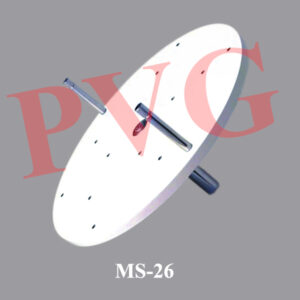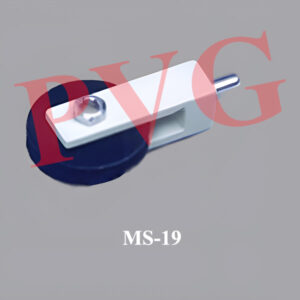MS-177 PVG GUINEA AND FEATHER TUBE
To demonstrate that in the absence of atmospheric pull, bodies of
different masses and density fall through a given distance in the
same time. Comprises a borosilicate glass tube of size
600 x 25 mm, fitted with rubber bung at both the ends, one solid
and other with a hole to carry a brass tube and 6 mm diameter
rubber tubing for connection to a vacuum pump. A Hoffman clipis
used on pressure rubber tubing. Inside the tube is a guinea
generally a small coin and a feather.
In air, the guinea and the feather fall at different speeds due to air
resistance. To show this, turn the tube upside down so both items
fall from one end of the tube to the other. The guinea will fall much
faster than the feather because it is affected less by air resistance.
(The feather has a greater surface area which comes in contact with
the surrounding air).
Turn the vacuum pump on and expel as much air from the tube as is
safely possible. When you have done this, tighten the Hoffman clip
and turn off the pump. Inside the tube you should now have a near
vacuum. Turn the tube upside down once again and you will see
that the guinea and feather arrive at the other end at the same
time. With no air in the tube, both objects fall at the same speed as
there is no air present (therefore no or negligible resistance) to
affect their descent.








Reviews
There are no reviews yet.